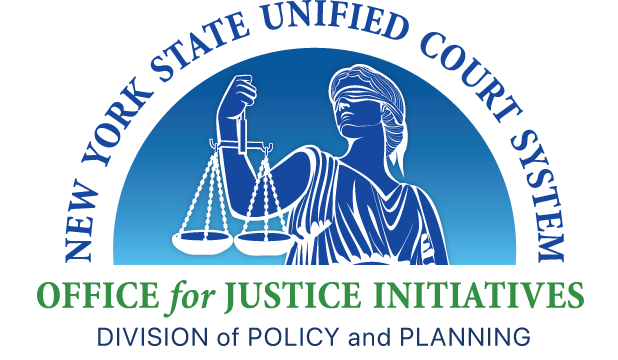What is Elder Abuse?
While there is no global definition, elder abuse can be broadly defined as a single or repeated act, or lack of approprioate actions which cause harm, risk of harm or distress to a person who is 60 years or older and occurs:
-
- within any relationship where there is an expectation of trust; and/or
- within an intimate partner and/or familial relationship; and/or
- when the targeted act is directed towards an elder person by virtue of age or disabilities.
Elder abuse includes acts of commission or omission, and takes many forms including physical acts, psychological, emotional, or sexual abuse, neglect, and financial exploitation. Red flags of abuse include can include when an older adult acts fearful, appears agitated, depressed or confused.
With some limited exceptions, New York is the only state where there is no mandated reporting of elder abuse by professionals.
Adult Protective Services workers who have reason to believe that a criminal offense has been committed, as defined by penal law, must report it to law enforcement pursuant to Social Services Law § 473(5); certain individuals, including, among others, an operator or employee of a residential health care facility, must report abuse in such facility as set forth in Public Health Law § 2803-d(1) and (3); and under Chapter 501 of the Laws of 2012: Protection of People with Special Needs Act, created to safeguard vulnerable persons under the jurisdiction of six state agencies, “custodians” must report crimes perpetrated against “vulnerable persons” as those terms are defined in the Act.
What Laws May Apply To Elder Abuse?
Below is a chart referencing criminal and civil statutes which may be relevant to elder abuse cases. Thislist is not exhaustive, but is intended to assist judges and court staff in identifying statutes that may apply to elder abuse cases.
1 This reference guide includes criminal statutes specifically related to an individual’s age, incompetency, and physical disability. Other criminal statutes, such as assault, criminal contempt, harassment, menacing, reckless endangerment, sexual assault, unlawful imprisonment, coercion, criminal mischief, larceny, fraud, identity theft, tampering with a witness, intimidating a victim, animal abuse and strangulation, may also apply to elder abuse cases.
How Can The Courts
ENHANCE ELDER JUSTICE?
While not all adults experience significant cognitive or physical decline with age, many will show at least small declines. Others may have more substantial impairments. Courts should make efforts to ensure that all older adults are able to participate in court proceedings to the fullest extent possible.
| Courthouse |
Courtroom staff |
- Ensure signs in courthouse are in large font and in plain language.
- Have information from Adult Protective Services, NY Connects, local offices for the aging and other services for the aging available.
- If in court’s control, consider providing accessible parking for older adults.
|
- If available, allow older litigants to wait in an area removed from other parties.
- Background noise should be decreased and lighting increased to the extent possible.
- Let older adults know that assistive listening devices, sign language interpreters, real time computer-aided transcription services (CART) for those who are deaf or hard of hearing, and magnifiers for persons who are visually impaired, may be provided.*
- Make drinking water available.
|
| Judge |
Judge, court staff and attorneys |
- Familiarize older litigants with seating arrangements in the courtroom and the roles of court staff.
- Explain to older litigants how their case will proceed and how long it is expected to take.
- Seek to accommodate medical needs or fluctuations in capacity and mental alertness when calendaring cases.**
- Schedule a sufficient number of breaks so that an older litigant can address personal needs.*
- Consider giving trial preference in civil cases where a litigant is 70 or older or terminally ill (CPLR §3403).
- Consider using technology, including remote appearances where authorized by law.*
|
- Allow time for older person to process information and respond to questions.
- Speak slowly and clearly. When requested, repeat information.
- Face older persons when speaking to them.
- Understand that transportation issues may affecting timeliness for those who travel by Access-a-Ride.
*See also: The New York State Unified Court System’s Americans with Disabilities Act and The Courts Guide at: 2017 ADA Guide.pdf.
|
What About Cognitive
CHALLENGES FOR OLDER LITIGANTS?
Judges are often required to evaluate the past, present and/or future capacity of an individual in a variety of contexts including, but not limited to, determining whether: a legal transaction was valid, the appointment of a guardian or guardian ad litem is appropriate, the individual is able testify on his or her own behalf and the individual is a “vulnerable elderly person” under the penal code. Judges should, therefore, know what constitutes normal cognitive aging, as well as understand dementia and how it presents.
| Normal brain aging as a result of a normally aging brain, some adults may process information slower, experience declines in verbal fluency or the ability to find words, have to work harder at activities requiring executive function, such as time management, paying attention or changing focus, planning, organizing, remembering details and multitasking. Mild forgetfulness can also be a sign of normal aging. |
Some conditions that may mimic dementia:
What may appear to be dementia may be caused by something else that is temporary and/or treatable. Conditions include, but are not limited to, the following:
- Medications which produce side effects such as drowsiness and mental dullness or mixing of medications
- Chronic diseases such as diabetes, arthritis and pain
- Changes in mood, such as depression and anxiety
- Certain infections (urinary tract or upper respiratory)
- Inadequate nutrition and/or hydration
- Vitamin deficiencies, such as B12
- Alcoholism/other substance abuse
- Thyroid problems
- Traumatic brain injury
- Delirium
- Sensory losses, such as hearing or seeing
- Certain mental illnesses
|
| Mild Cognitive Impairment is the stage between the normal cognitive decline of aging and the more serious decline of dementia. MCI may present with memory, language, thinking and judgment problems that are greater than normal age-related changes but not severe enough to interfere with daily life and usual activities. |
| Dementia is the term used to describe a group of brain disorders that cause memory loss and a decline in mental function over time. |
| Alzheimer’s Disease is the most prevalent non- reversible form of dementia. Dementia symptoms can vary and include short-term memory loss, difficulty with communication and language, difficulty focusing, problems with reasoning and judgment, disorientation and confusion and visual perception issues. |
Created by:
The Center for Court Innovation, New York State Office of Court Administration’s Office of Policy and Planning, and New York State Judicial Committee on Elder Justice, this document was supported by Grant No. 2016-WR-AX-0045 awarded by The Office of Violence Against Women, U.S. Department of Justice. The opinions, findings, conclusions, and recommendations expressed are those of the authors and do not necessarily reflect the views of either The Department of Justice or The Office On Violence Against Women.

